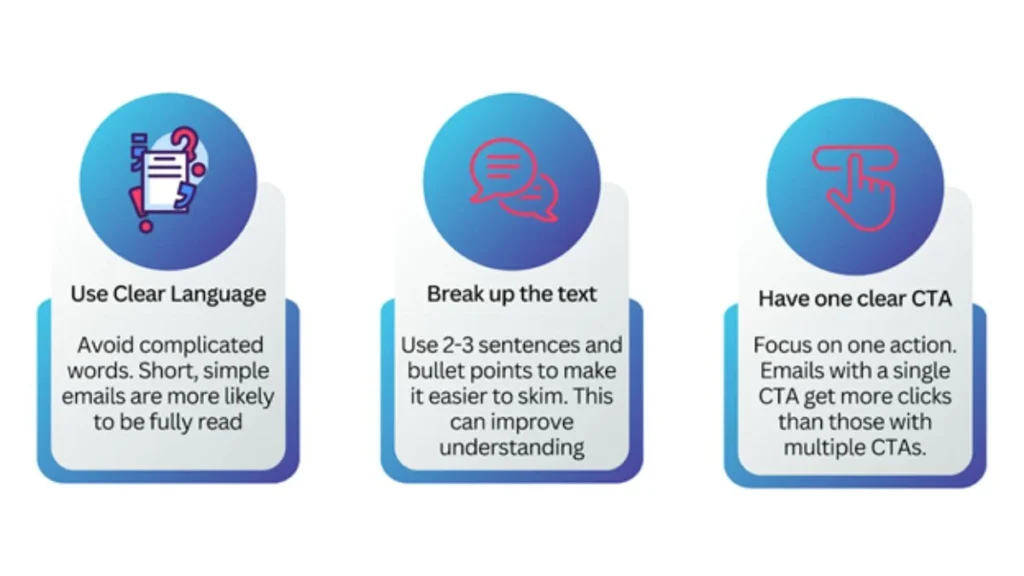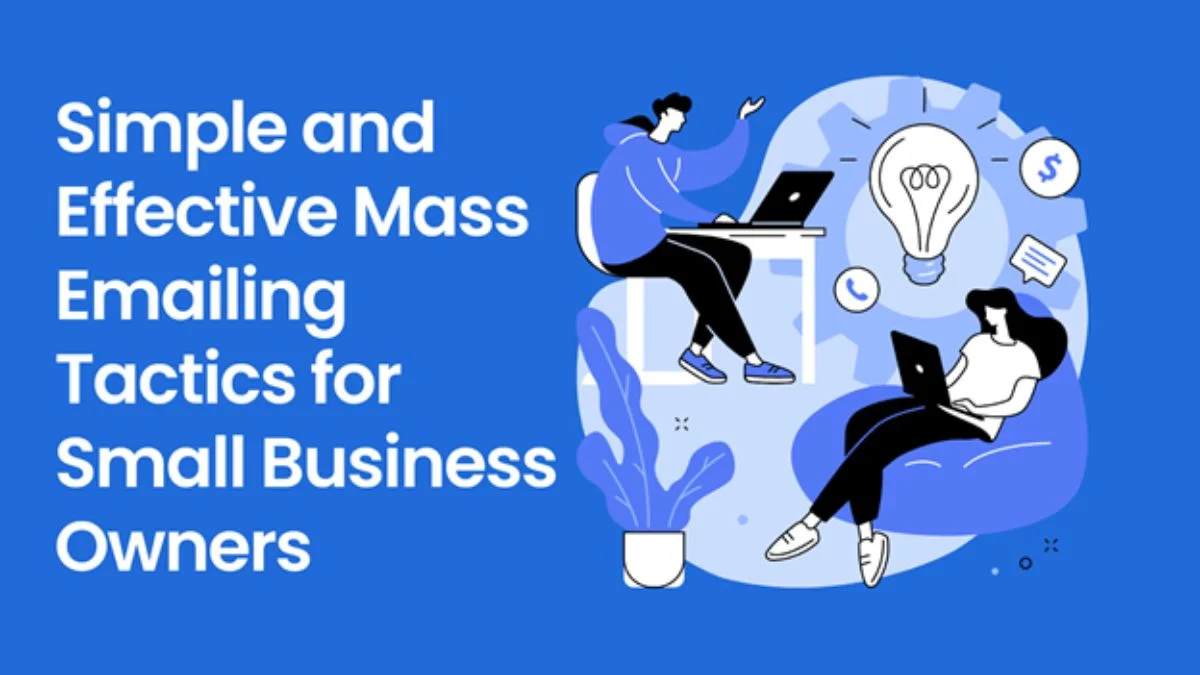Mass emailing is a highly effective tool for small businesses. When done right, it drives sales, strengthens customer relationships, and boosts brand loyalty. The challenge is to execute email campaigns that deliver results. With the right strategies, small businesses can achieve great outcomes without expensive tools.
According to a recent study on email marketing effectiveness, email continues to be one of the most cost-effective marketing methods, delivering strong ROI for businesses of all sizes.
This blog covers simple, effective mass email tactics to help you engage your audience, increase open rates, and drive conversions. Using an email marketing tool, you can streamline the process and make your campaigns more efficient. Let’s get started!
Build a Targeted Email List
Your email marketing success starts with building a targeted email list. While buying a list might seem easy, growing your list organically is much more effective. If you want to know how to do mass mailing effectively, start by ensuring your audience is genuinely interested in your content.
- Skip buying lists: Businesses that build their email lists organically see higher open rates. Purchased lists often contain outdated or uninterested contacts, which can harm your sender’s reputation and lower engagement.
- Use customer segmentation: Divide your audience into groups based on behavior, purchase history, or demographics. This helps you send more relevant content. Segmented email campaigns can generate more revenue than non-segmented ones.
- Offer valuable opt-ins: Make use of lead magnets, such as discounts, free resources, or exclusive content, to attract subscribers. For instance, a simple form offering a free e-book or a 10% discount can boost sign-ups.
Craft Compelling Subject Lines
The subject line is the first thing your audience sees, and it often determines whether they open your email. So, crafting compelling subject lines is essential.
- Keep it concise and relevant: Aim for subject lines with fewer than 50 characters. Emails with concise subject lines have a 12% higher open rate. Keep it direct and avoid filler words.
- Personalization is key: Incorporate your recipient’s name or location to make the email feel more personal. Emails with personalized subject lines can increase open rates by 26%.
- Incorporate urgency or value: Create urgency with phrases like “limited-time offer” or “exclusive access.” Emails with a sense of urgency tend to boost open rates by 22%.
Optimize Email Content for Readability
Once someone opens your email, make sure the content is easy to read. Most people skim, so keep it simple and easy to read.

Use Automation to Stay Consistent
To save time while maintaining engagement, embrace email automation. The Tool allows small business owners to automate campaigns efficiently, nurturing relationships without manual effort.
- Set up automated welcome sequences: Welcome emails have a higher open rate, so make sure to greet new subscribers with a series of automated messages that introduce your business and encourage the first conversion.
- Use drip campaigns: Drip campaigns are a series of automated emails designed to nurture leads over time. Drip campaigns can lead to higher click rates compared to standard emails.
- Personalize at scale: With automation tools, you can easily personalize emails by adding customer names, purchase history, or other details. This level of personalization can drive six times higher transaction rates compared to generic emails.
Finding the Right Timing and Frequency
The timing and frequency of your emails are just as important as the content. Finding the perfect balance ensures that your emails are seen and appreciated, rather than ignored.
- Test and analyze the best send times: Experiment with different days and hours to see when your audience is most engaged. For example, many businesses find success by sending emails mid-week during business hours.
- Avoid spamming: Sending one email per week or biweekly strikes the right balance between staying top of mind and not overwhelming your subscribers. Consistency is key, but over-emailing can lead to unsubscribes.
- Re-engage inactive subscribers: Use occasional win-back campaigns to re-engage subscribers who haven’t opened your emails in a while. This can help keep your list clean and maximize your results.
A/B Test for Continuous Improvement
To refine your email strategy, regularly A/B tests different elements of your campaigns.
- Test subject lines
- Experiment with different CTAs
- Evaluate email content and design
Testing different CTAs can increase clicks by a whopping 371%
Ensure Mobile Optimization
More than 50% of all emails opened today are on mobile. So, optimization for mobile has become a key to success in this regard.
- Use responsive design: Responsive email adapts to the size of your screen and makes sure your content reads well on tablets and mobile phones as well.
- Keep key information above the fold: Make sure that important elements like your CTA are visible without scrolling. This can improve your chances of generating a conversion.
- Simplify images and media: Compress large images and avoid excessive media that could slow down loading times on mobile devices.
Comply with Legal Standards
Compliance with regulations like CAN-SPAM and GDPR is not only essential to avoid penalties but also to maintain the trust of your subscribers.
- Follow CAN-SPAM guidelines: Always include an unsubscribe option in your emails, and honor opt-out requests promptly to avoid penalties.
- Respect privacy regulations: If you have subscribers outside the U.S., be mindful of GDPR and other privacy laws. Failing to comply with these regulations can lead to significant fines.
- Keep a clean list: Regularly clean your email list by removing bounced emails and inactive subscribers to improve deliverability and open rates.
Traditional vs. Automated Email Marketing
This comparison highlights how automated tools can significantly enhance your email marketing efforts, saving time while improving results.
| Feature | Traditional Email Marketing | Automated Email Marketing |
| Personalization | Limited, often manual | Extensive, automated at scale |
| Timing | Based on guesswork or general best practices | Data-driven, optimized for each recipient |
| Segmentation | Basic, often manual | Advanced, automated based on behavior |
| Testing | Limited, time-consuming | Continuous, automated A/B testing |
| Analytics | Basic metrics, manual analysis | Comprehensive, real-time insights |
| Compliance | Manual checks and updates | Automated compliance features |
Conclusion
Mass emailing can be very effective if one can position it in the right place when in the hands of a small business owner.
Focus on the targeted list, compelling subject, and optimized content with automation capabilities may bring you campaigns that are not only interesting results but significant ones as well.
Some tool make these efforts easy while keeping one very well within the regulations concerning your timing and optimizing strategy for betterment.
FAQs
1. How can I grow my email list without purchasing contacts?
Offer valuable incentives like free guides, discounts, or exclusive content to encourage voluntary sign-ups. Avoid purchasing contacts, as they often lead to lower engagement rates.
2. What’s the ideal frequency for sending mass emails to avoid being marked as spam?
Sending one email per week or biweekly helps maintain engagement without overwhelming your subscribers, minimizing the risk of being marked as spam.
3. How can I personalize mass emails without spending too much time?
You can automate personalization, inserting names, locations, or purchase history into emails at scale.
For more information, click here.









